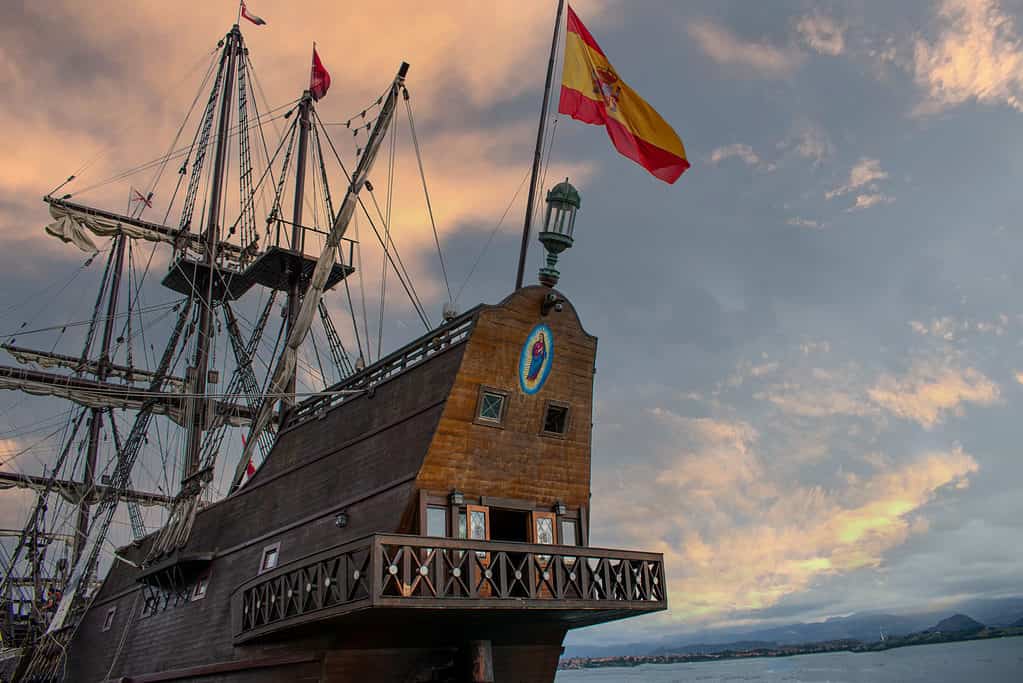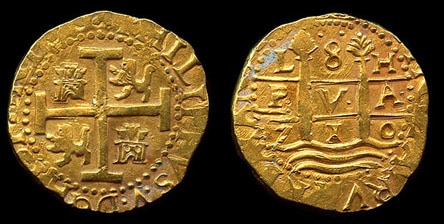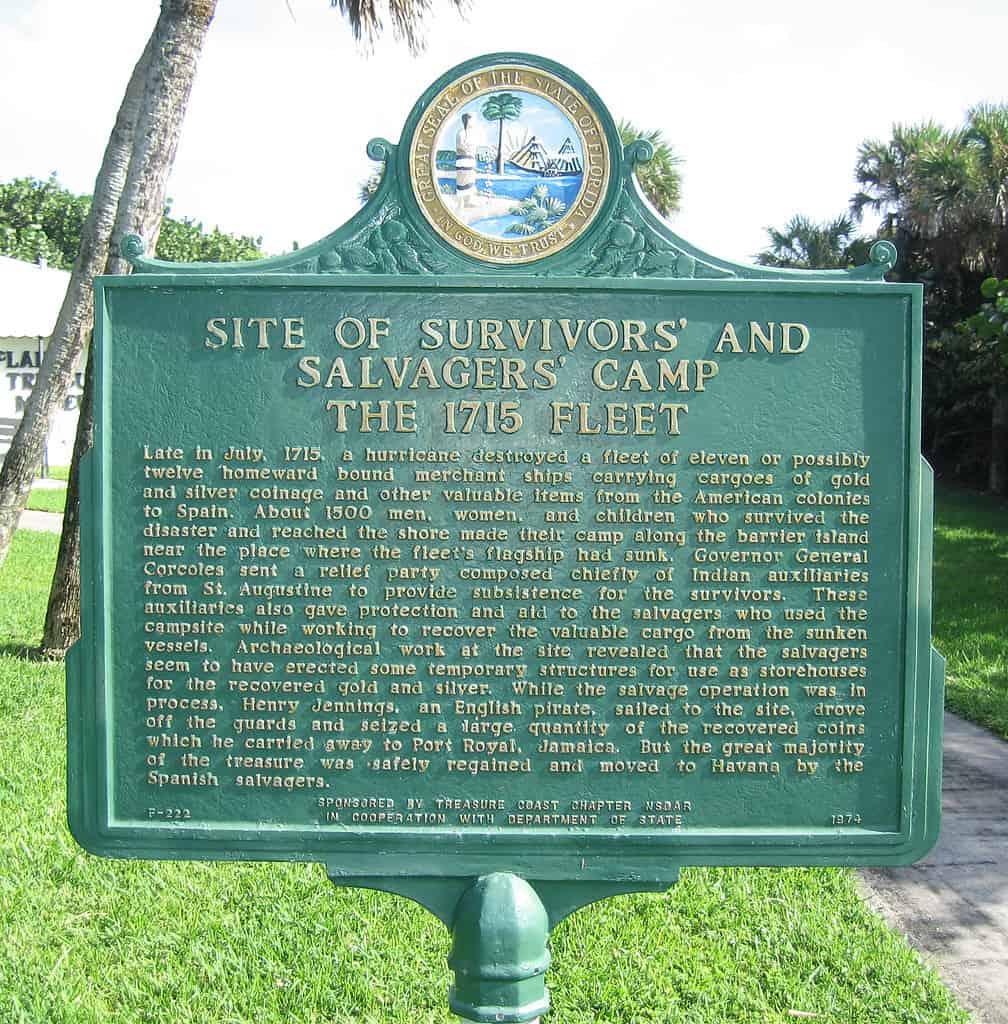The year 2015 was very special for the Schmitt family from Florida! It was the year that they discovered gold artifacts on the ocean floor that were worth over $1 million. The event was widely reported in the news but what is really special is that they recorded footage of the moment so that we can all witness the excitement for ourselves:
Treasure on the Ocean Floor
The gold was hidden in the wreckage of a Spanish fleet that went down in a storm when it was just off the Florida coast. This happened in 1715 – around three centuries ago, and the gold has been there ever since.

A Spanish fleet sunk in a storm just off the Florida coast in 1715
©photointruder/Shutterstock.com
Even though it was found by Eric Schmitt, the rights to the site are owned by the salvage company. In this footage, we see the divers find some gold coins in the silt on the ocean floor, and in total 51 were found. They seem to be in remarkably good condition! However, this haul comprised a lot more than coins. There were also 40 feet of gold chain and one extremely rare coin that is called the “Tricentennial Royal.” It was minted for King Philip V of Spain, and it is thought that this coin alone is worth $500,000 because it was in such great condition.
More About the Spanish Treasure

T
©Augi Garcia, CC BY-SA 3.0 – License
Apparently, the “Tricentennial Royal” coins were not destined for general circulation, they are referred to as presentation pieces. There are only around six known examples of them in the world.
The gold was found during an annual family treasure-hunting trip. The Schmitt family also included Eric’s wife, sister, and parents. It was found in the water off Fort Pierce, just north of Port St. Lucie. This is where 11 Spanish ships sank in a hurricane as they traveled from Havana, Cuba in an attempt to return to Spain. They were carrying an estimated 3.5 million pesos in gold and jewels which would amount to around $450 million today. Some of this belonged to the Queen of Spain. Local and federal laws require up to 20 percent of the haul to be released to the state so that it can be displayed in museums. The remainder is split between the Schmitt family and the salvage company. However, we should not forget that this was also a human tragedy, and around 1,500 crew members were killed when the ships sank.
Is it Normal to Find Gold in the Waters of Florida?

Florida is not known for its gold mining but sunken treasures can be found off its shores and perhaps along its shores.
©Leonard J. DeFrancisci, CC BY-SA 3.0 – License
The waters off the coast of Florida are well known for having multiple shipwrecks, many of which are from the Spanish Fleet, which is why this area is known as the Treasure Coast. This particular bounty, known as the 1715 Treasure Fleet, came from two different fleets, the “Nueva España Fleet”, and and the “Tierra Firme Fleet”, which had a total of 12 ships combined. Although the 12th ship, the French frigate “Le Grifon”, did not travel with the other 11 ships and safely returned to Europe.
While Florida does not have many opportunites for gold mining, and the prospects of finding gold are very slim, thanks to the misfortune of the 1715 Treasure Fleet, there is treasure to be found in this area. The salvage team 1715 Fleet Queens Jewels, helmed by CEO Brent Brisbane, allows treasure hunters to dive during what is dubbed the “treasure hunting season,” from June to August, although by law, the state of Florida has first rights to 20% of any recovery.
How Large Was the Lost Treasure?
![17th Century "Spanish Treasure" "Shield Type" Silver 8-Reales (Peso) Cob ("Macuquina") Coin marked with Spanish Royal Coat of Arms of Filipe IV (1621-1665) (illustrated) Minted in México City (Mint mark: "M" with small "o" above located to left of the shield of Filipe IV on reverse). 43mm x 37mm (irregular), 26.658 gm (0.941 oz) [Note: The legal weight for this denomination was 27.468 gm (0.970 oz); this coin is 0.810 gm (0.029 oz) short of that.] Fineness: 930.5.](https://a-z-animals.com/media/2022/12/17th_Century_Spanish_Treasure_Silver_8_Reales_Cob_Coin-1024x676.jpg)
It is believed that there is still more than $400 million buried in the water and surrounding coastal areas.
©Centpacrr at English Wikipedia, CC BY-SA 3.0 – License
The 1715 Spanish Treasure Fleet had a combined total of more than $450 million in gold and silver coins, plus gold and silver bars, jewelry, emeralds, pearls, and even invaluable Kangxi Chinese export porcelain. Only a fraction of these treasures have been recovered. It is believed that there is still more than $400 million buried in the water and surrounding coastal areas.
The photo featured at the top of this post is © san4ezz/Shutterstock.com
Thank you for reading! Have some feedback for us? Contact the AZ Animals editorial team.







